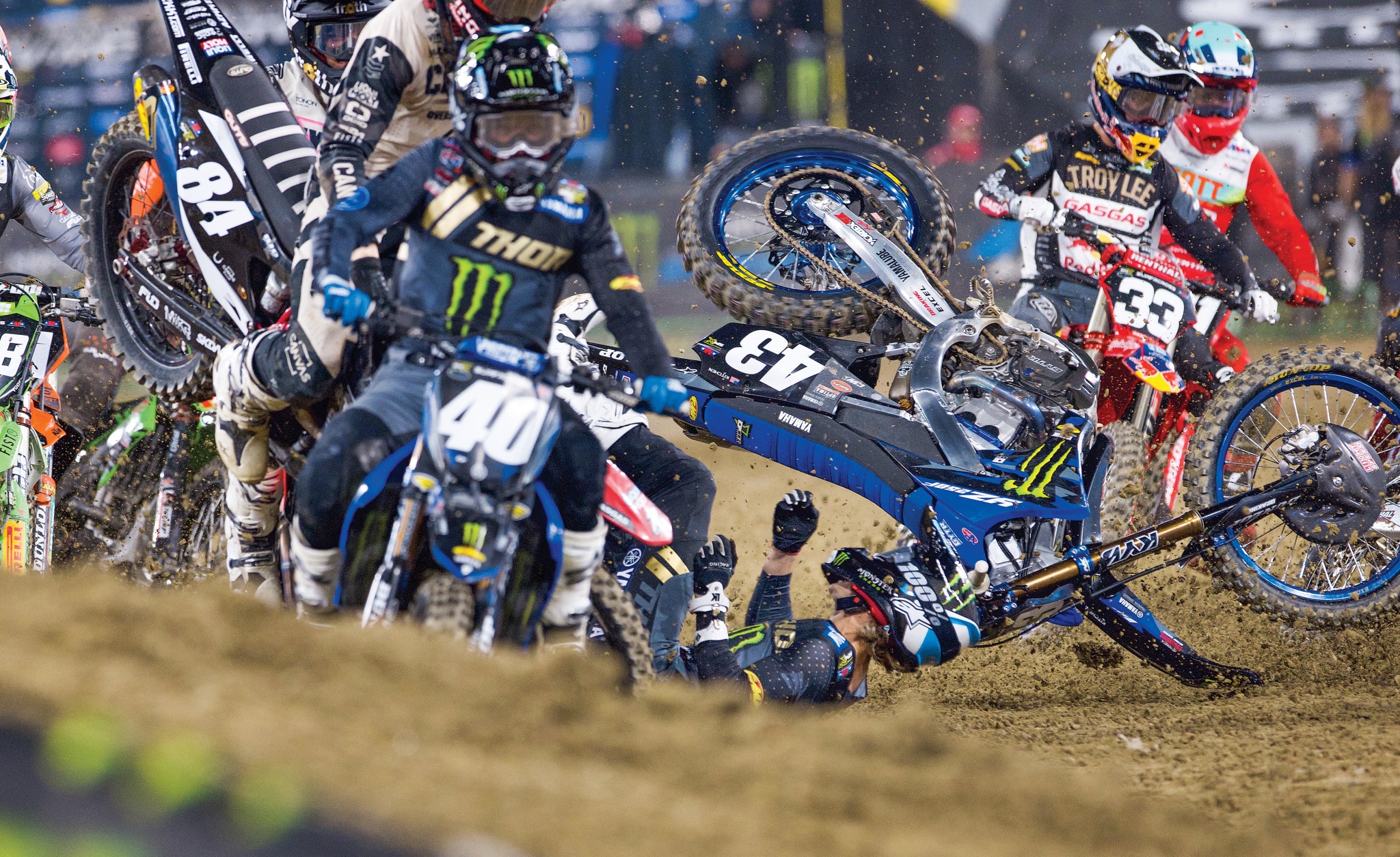ASK THE MXPERTS: A GOOD QUESTION WITH NO GOOD ANSWER
GOOD QUESTION WITH NO GOOD ANSWER
Dear MXperts,
I’m new to the sport. I bought my first bike during the pandemic and started racing as soon as the local tracks reopened, but when I’m watching Supercross on TV every Saturday night, I have to ask people around me, “Who are these guys in the 250 class?” Plus, they change from week to week. I’ve never heard of most of them. I’m confused. Please explain it to me.
The original basis for dividing the 250 Supercross series into Eastern and Western regions was part grassroots enthusiasm, part inferiority complex and part egalitarianism. Throughout the ’70s and ’80s, factory rides were predominantly handed out to West Coast-based riders—at least it was perceived that Californians had the fast track to sponsorship. But, a quick look at the home states of many AMA National Champions included New York, Connecticut, Illinois, Oklahoma, Kansas, Michigan, Florida, Oregon, Virginia, Pennsylvania, North Carolina, Texas, and Maryland. For the 1985 season, the AMA wanted to develop a 125cc Supercross class that would serve as a training ground for future Premier-class riders.
At the same time, it was suggested (by the late Dave Coombs, Sr.) that dividing the newly proposed 125cc Supercross series into Eastern and Western divisions would force the factories to search for potential talent outside of the Golden State. The idea was that young riders would earn their stripes in the 125 class, and the factories would be compelled to support twice as many riders. The system has worked, albeit with several glitches, for the last 38 years, but its usefulness has come to an end for these ten reasons.
(1) The emphasis of professional Supercross racing is no longer grassroots. Supercross has become big-time entertainment, and the show’s producers have to be asking themselves if there is room on the stage for not-yet-ready-for-prime-time riders.
(2) The paying Supercross customers don’t care about bicoastal feudalism. They pay big-ticket prices to see the best performers possible on the center stage, and it is obvious, by the fact that the 250 East/West winners lap up through the field that there isn’t an abundance of 250 Supercross talent around. Well, that’s not exactly true. There is plenty of talent; it’s just split in half.
(3) If the AMA combined the 250 East/West Supercross series into a single 17-race series that runs in conjunction with the regular 450 series, instead of the Lawrence brothers, Haiden Deegan, Cameron McAdoo, Michael Mosiman, Tom Vialle, and R.J. Hampshire only racing half the time, all the 250 stars of the class would race against each other every week.
(4) In a combined 250 series, the fans would get to see the best competition possible. The racers would get to prove themselves against the toughest competitors, and every weekend would be like the East/West showdown event (that only ran twice in the 2023 AMA Supercross series).
(5) It may seem hard to believe, but no fans outside of the 250 West series ever got to see the Championship seasons of Jeremy McGrath on his Peak Honda in 1991 and 1992. We think that fans across the country deserve to see all the 250 stars race, not just three or four of them.
(6) Changing the 250 East/West into a single 250 Supercross series would mean that it would be a much more valuable “National Championship” class instead of two Regional Championships.
(7) It is true that combining both coasts would make the competition tougher, but 40 riders would still make it to every night show, and 20 of those would be in the main events; only the slowest riders wouldn’t rise to the challenge.
(8) A single 250 National Supercross Championship would sync with the AMA 250 National Championship. Additionally, no riders would ever be forced to move up to the 450 class. The purse would increase from the piddling amount that the 250 riders make now, and while naysayers claim that it would cost people their jobs, do you really think that riders who can’t make the night show have to pay for team managers, mechanics or trainers. These are the people the Supercross Futures program was instituted to help.
(9) When the 125 East/West system was developed for 1985, the series’ founders never envisioned factory teams paying 250 riders $1,000,000 a year to race a regional Championship that most people quickly forget about.
(10) Combining the two coasts into one 17-race 250 National Championship series would make it possible for every team, big or small, to hire a true-to-life contender. That isn’t true today. Unification is the ultimate answer, because the sport doesn’t benefit from having some of its biggest stars only race half the time, against half the competition, for half the money and half the respect.






Comments are closed.